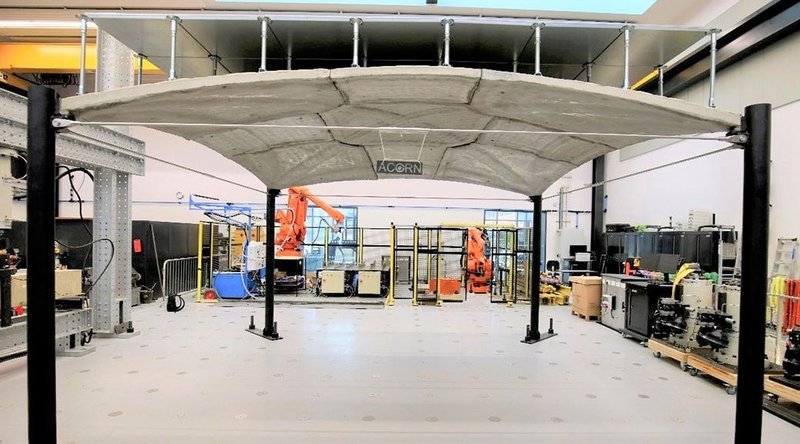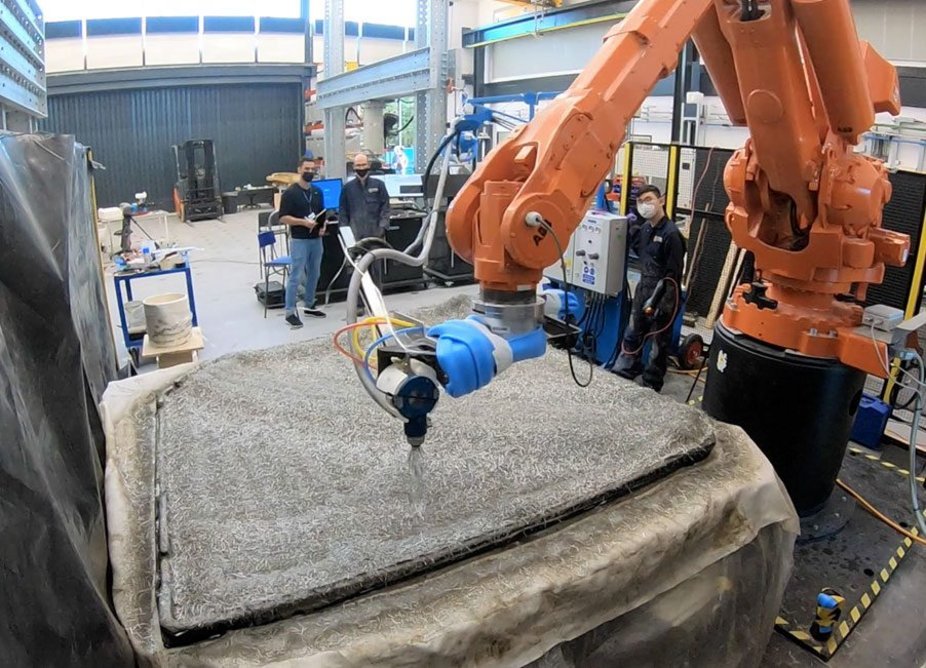ACORN: Thin Vaulted Floor Slab Could Slash Embodied Carbon by 60%
The prototype 4.5m x 4.5m slab installed at Cambridge University (Credit: Robin Oval)
UK universities’ ACORN project cuts concrete use with robot-manufactured curved ‘thin shell’ panels on columns and a raised floor above in quest for net zero buildings.
A robot-manufactured ‘thin shell’ vaulted floor slab with 60% less embodied carbon than an equivalent flat slab could be the secret to unlocking net zero buildings, according to researchers behind the first full-scale prototype.
The segmented structure was developed by ACORN (Automating Concrete Construction), a research project led by an interdisciplinary team of structural engineers, mathematicians and manufacturing experts from the Universities of Bath, Cambridge and Dundee.
The project received £1.5 million of funding from UK Research & Innovation (UKRI) and is backed by a consortium of 15 industry partners including Laing O’Rourke, BRE, Buro Happold, and architects Foster + Partners and Tonkin Liu.
Robot spraying fibre-impregnated concrete (credit: Robin Oval)
The integrated system comprises a series of curved concrete panels interconnected to create a vault standing on supporting columns. A raised floor above provides a level floor surface.
The structure is designed to resist compression forces as a more efficient and lightweight alternative to traditional floor slabs, which rely on the bending strength of concrete to support loads – resulting in the need for steel reinforcement to resist tension induced by bending.


